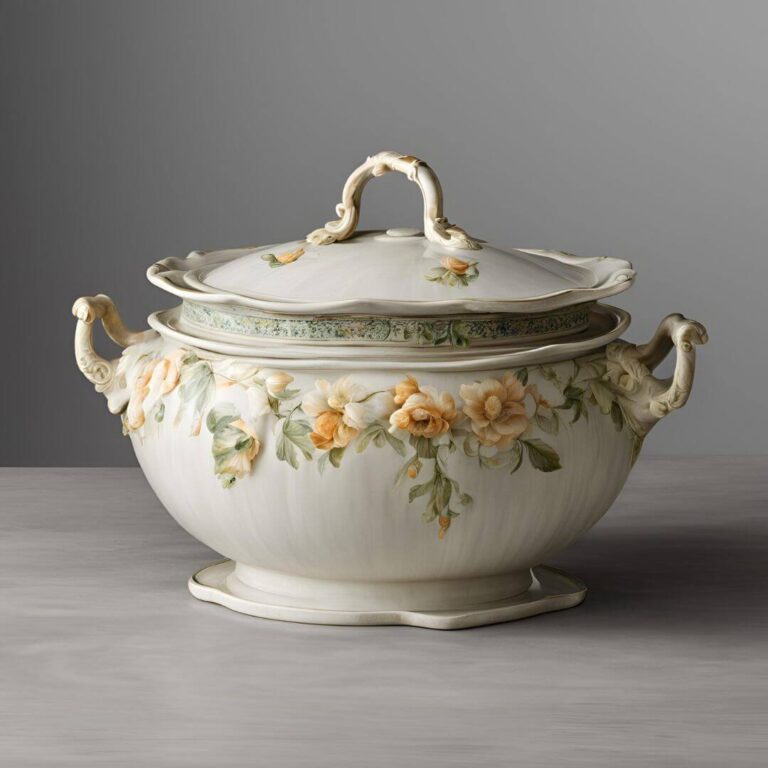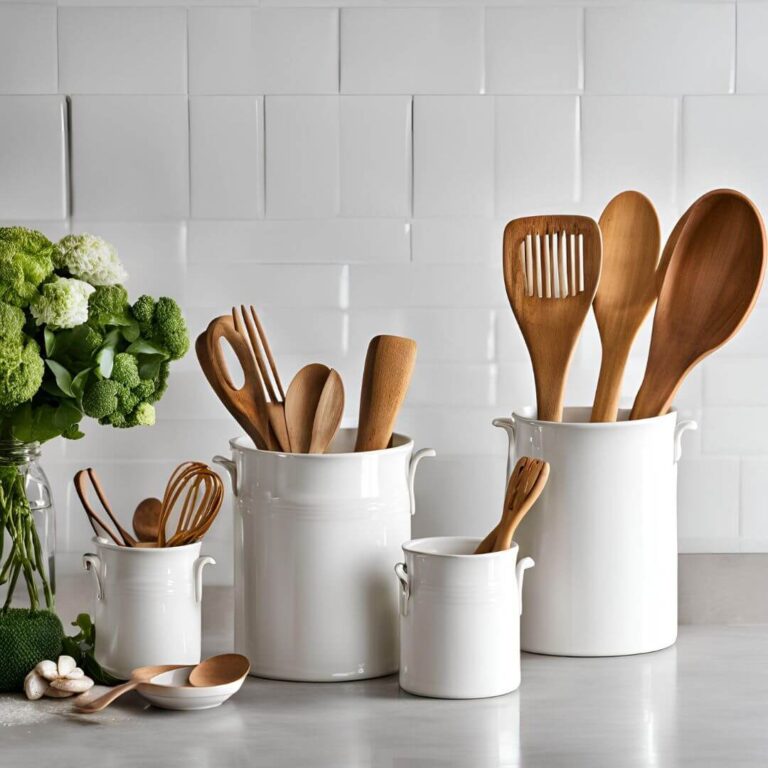Cooking Thermometer For Oil: Easy Guide
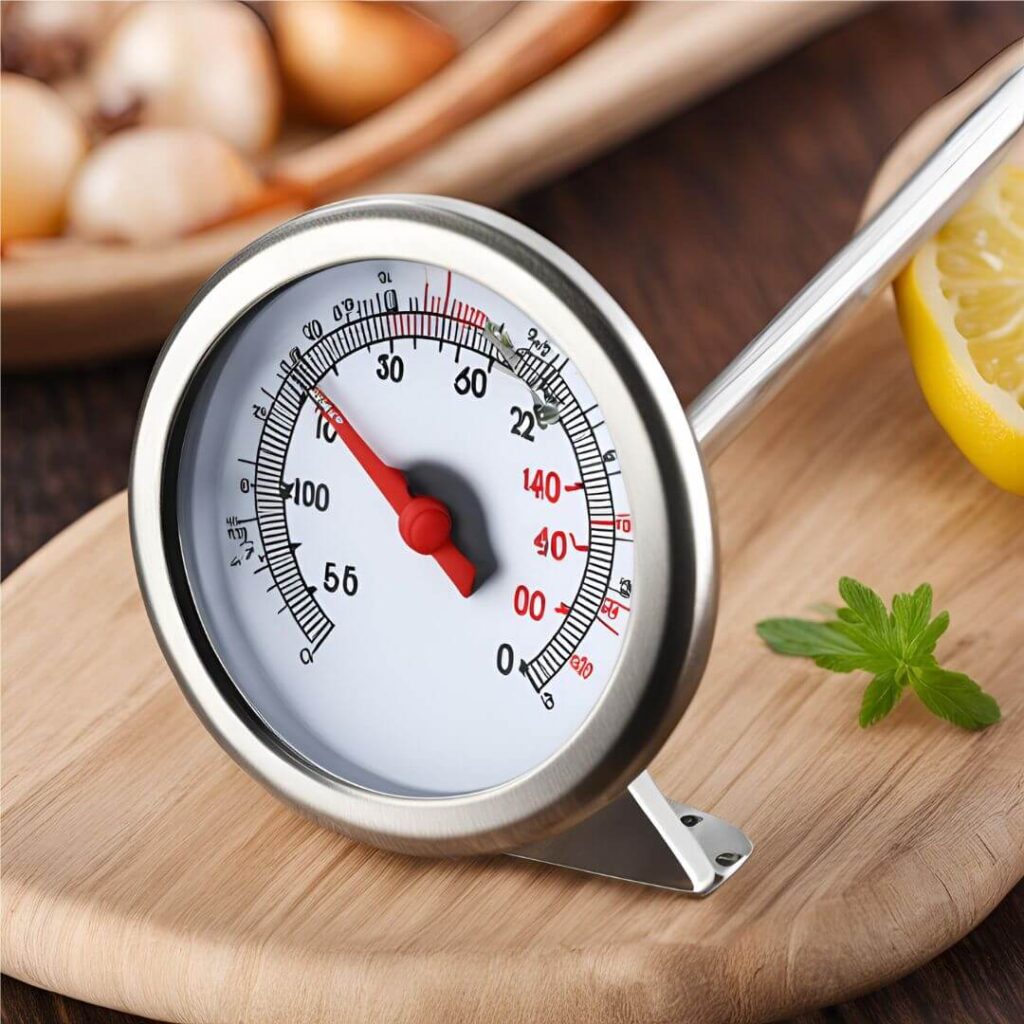
A cooking thermometer for oil is essential to control the correct temperature while frying. This ensures the oil reaches the proper temperature for optimal results and safe cooking.
Cooking with oil requires careful temperature management to achieve optimal flavour and texture. A cooking thermometer for oil is a valuable tool for achieving this accuracy. Whether you use deep-frying, pan-frying, or deep-frying, the correct temperature is crucial to the success of your dish.
Using a cooking thermometer for oil helps you ensure that the oil reaches the correct temperature and remains safe. This prevents your food from getting greasy or soggy. A thermometer is essential for home cooks and professional chefs to improve their grilling skills and create delicious, perfectly cooked meals.
Why Use A Cooking Thermometer For Oil:
Maintaining the correct temperature is essential when cooking with oil. However, determining oil temperature can be challenging, mainly if you rely on guesswork. That’s where a cooking thermometer for oil comes in handy. Using a thermometer, you can accurately determine the oil’s temperature, ensuring that you thoroughly cook your food.
- Accuracy In Frying:
A cooking thermometer for oil helps to ensure correct frying. When you fry food, the temperature of the oil is crucial to achieving the right texture and flavour. Food can burn if the oil is too hot; If it’s not hot enough, the food can become mushy and unappealing. Using a cooking thermometer, you can accurately measure the temperature of the oil, ensuring that it is suitable for frying your food thoroughly.
- Safety Considerations:
Using a cooking thermometer for oil helps cook yummy food and remain safe. When you heat oil, it can get too hot and cause a fire. A thermometer lets you check the oil’s temperature to ensure it doesn’t get too hot. It also helps you avoid undercooked food, which can make you sick.
Investing in a cooking thermometer is brilliant if you’re serious about cooking with oil. Not only does this make cooking more accessible and more accurate, but it also helps keep you and your family safe. Make sure you choose a high-quality thermometer that’s easy to read and use so you can enjoy perfectly cooked food every time.
Types Of Cooking Thermometers For Oil:
A suitable thermometer is essential when cooking with oil. Various cooking thermometers are available for oil-based recipes, each serving a specific purpose.
- Candy/deep Fry Thermometers:

- Designed for high-temperature cooking like deep frying.
- Features a clip to attach to the pot for accurate temperature readings.
- Usually, have a temperature range of up to 400°F for oil-based recipes.
- Digital Probe Thermometers:
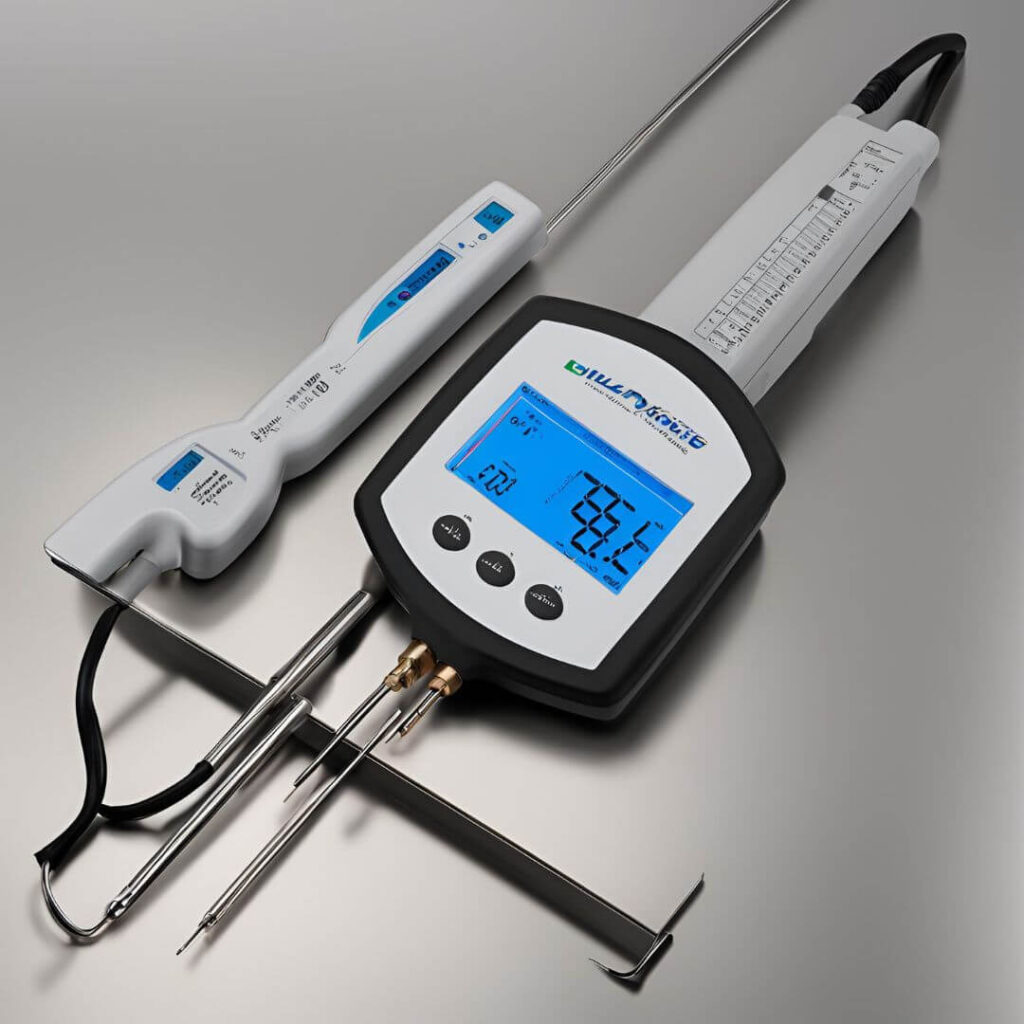
- Offer quick and precise temperature readings.
- Consists of a metal probe connected to a digital display for easy monitoring.
- Can be used for a variety of cooking methods, including checking oil temperature.
- Infrared Thermometers:
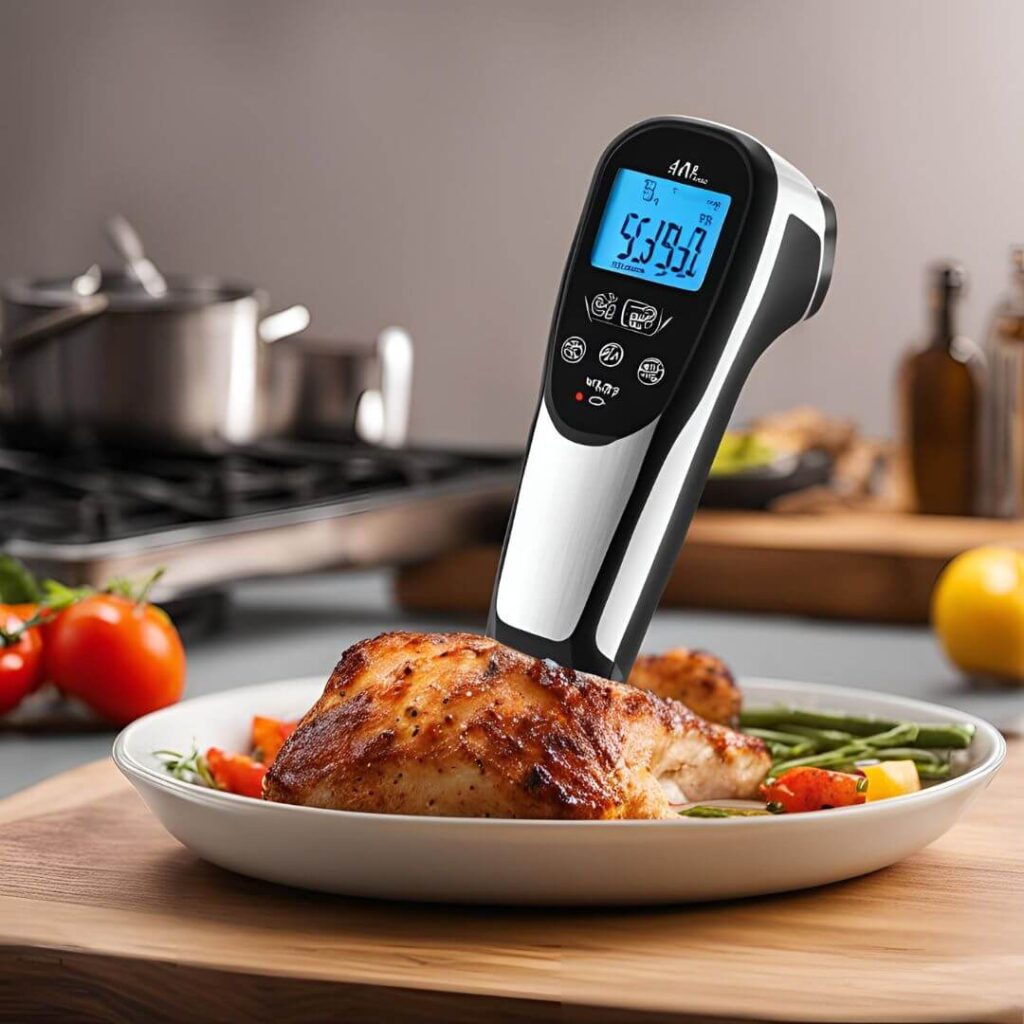
- Non-contact thermometers are ideal for measuring oil temperature from a distance.
- It helps check the surface temperature of hot oil without direct contact.
- They provide instant temperature readings and are easy to use.
Key Features To Look For:
When choosing an oil cooking thermometer, look for one with a high-temperature range, quick response time, and an easy-to-read display. A lengthy inquiry is vital for safety and accuracy. Choose models with adjustable alarms, convenience, and a robust and durable build for long-lasting use.
A thermometer is essential for achieving perfect cooking results. If you’re cooking with oil, it’s even more important to use a cooking thermometer for oil to ensure the correct temperature. But with so many options available, choosing the right one can take time. In this blog post, I will discuss what features to look for when choosing a cooking thermometer for oil.
- Temperature Range:
The temperature range is very important when choosing a cooking thermometer for oil. Choose one that measures from 100°F to 500°F. This range allows you to use it for various cooking methods, such as deep-frying, pan-frying, sautéing, and more.
- Material And Durability:
The material and durability of cooking thermometers for oil are essential factors. Ensure the thermometer comes from high-quality materials that can withstand high temperatures. Stainless steel thermometers are an excellent choice for cooking as they are durable and easy to clean.
- Ease Of Use:
A cooking thermometer should be easy to use for the oil you choose. It should have a clear and easy-to-read display that shows the temperature accurately. The thermometer should have a long probe so your hand does not get too close to the hot oil.
- Cleaning And Maintenance:
Cleaning and maintenance are essential when choosing a cooking thermometer for oil. Choose a thermometer that is easy to clean and maintain. Look for a thermometer with a detachable probe, which makes it easy to clean. Follow the manufacturer’s instructions when cleaning the thermometer to ensure longevity. In conclusion, choosing a suitable cooking thermometer for oil can significantly affect the quality of your food.
When choosing a thermometer, consider its temperature range, materials and durability, ease of use, and ease of cleaning and maintenance. These features will help you choose a cooking thermometer for oil that suits your needs and preferences.
How To Use A Cooking Thermometer For Oil?
Every kitchen needs an oil-cooking thermometer. This ensures that the oil is heated to the right temperature to properly cook the food, whether it is frying, deep-frying, or frying. Using a cooking thermometer helps you cook consistently delicious food.
In this guide, I’ll explain how to use a cooking thermometer for oil. We’ll cover how to calibrate it for accuracy, get accurate temperature readings, and set it right for the right time.
- Calibration For Precision:
Before you start using your cooking thermometer for oil, it’s important to calibrate it to ensure an accurate temperature reading. Calibration ensures that your thermometer is accurate and reliable, essential for correctly cooking your foods. Here’s how to calibrate your cooking thermometer.
- Fill a bowl with ice water and let it sit for a few minutes to reach a durable temperature.
- Insert the cooking thermometer into the ice water and ensure you fully immerse the probe.
- Wait for the thermometer to stabilise and check the temperature reading. It should read 32°F (0°C) or very close to it.
- If the reading is off, use a small wrench or pliers to adjust the calibration nut beneath the dial until it aligns with the correct temperature.
- Reading The Temperature:
Once you calibrate your cooking thermometer, you can read the oil temperature accurately. Follow these guides to ensure exact temperature readings.
- Clip the cooking thermometer onto the pot’s side and ensure that the probe is submerged in the oil but does not touch the bottom or sides of the pot.
- Let the oil heat up.
- Monitor the temperature on the thermometer’s display as the oil heats up.
- When you reach the desired temperature, carefully remove the thermometer from the oil and ensure it does not burn you.
- Placement And Timing:
Proper placement and timing are crucial when using a cooking thermometer for oil. Consider the following tips.
- Always place the cooking thermometer in the thickest part of the oil to get an accurate temperature reading.
- Avoid touching the bottom or sides of the pot, as this can affect the reading.
- Wait for the thermometer to stabilise before recording the temperature.
- Follow your recipe’s instructions for the recommended oil temperature and cooking time.
- Adjust the heat as needed to maintain the desired temperature throughout the cooking process.
Follow these guidelines to get the most out of your cooking thermometer for oil and ensure you cook your foods perfectly every time.
Common Mistakes To Avoid:
- Incorrect Placement:
Proper placement of the thermometer can give accurate readings. Immerse the tip of the thermometer in the oil, but ensure it does not touch the bottom of the pan. This provides an accurate temperature reading and prevents damage to the thermometer.
- Not Allowing Time To Stabilize:
Many cooks must let the cooking thermometer stabilise before reading the temperature. Waiting a few seconds after diving the thermometer in the oil is essential to get an exact reading. Rushing this process can result in inaccurate temperature readings.
- Ignoring Manufacturer’s Instructions:
A common mistake is to ignore the manufacturer’s instructions when using a cooking thermometer for oil. It is essential to read and follow the manufacturer’s instructions to ensure the thermometer is used correctly and maintained properly. Failure to do so can result in inaccurate readings and possible damage to the thermometer.
Recipes That Benefit From A Thermometer:
Enhance your cooking with a reliable oil thermometer. Achieve the perfect frying temperature for crispy and delicious food every time. Gain the art of deep frying with precision and belief.
- Deep-fried Delicacies
- Candies And Sweets
- Homemade Chips And Snacks
Maintaining Your Cooking Thermometer:
To maintain your cooking thermometer for oil, always clean it after each use and avoid submerging the entire thermometer in water. Store it in a protective case and calibrate it regularly to ensure accurate readings. Proper maintenance will extend the life of your cooking thermometer and keep it in top working condition.
- Regular Cleaning:
Clean your cooking thermometer regularly after each use. Use mild soap and warm water to clean the thermometer. Ensure the probe is fully dry before storage.
- Storage Tips:
Store your cooking thermometer in a protective case or sleeve. Keep it in a dry place, away from moisture and direct sunlight. To prevent damage, avoid storing near heat sources.
- Battery Replacement And Care:
If the display dims, replace the battery. Open the battery part with a tiny screwdriver. Dispose of old batteries properly to avoid harming the environment.
Beyond Frying: Other Uses For Oil Thermometers
Discover the versatility of oil thermometers beyond just frying. From baking bread to making yoghurt, explore the various applications of this handy kitchen tool.
- Baking Bread:
Monitor the oil temperature in your bread recipes using an oil thermometer to ensure perfect baking.
- Roasting And Grilling:
Use an oil thermometer to measure oil temperature for optimal cooking results for juicy roasts and perfectly grilled meats.
- Making Yogurt:
Maintaining proper oil temperature is very important while making curd at home. An oil thermometer helps you achieve ideal conditions for curd fermentation.
Related Questions:
Which Type Of Thermometer Do You Use For Oil?
A deep-fry or candy thermometer is best for checking oil temperature. These thermometers handle high heat well and give accurate readings, which is essential for frying or candy making. Choose one with a long probe to reach the oil without getting too close to the heat. Ensure it has a clean and easy-to-read display.
How Do You Measure The Temperature Of Cooking Oil?
To check the temperature of the cooking oil, use a deep-fry or candy thermometer. This thermometer can handle high heat and give accurate readings. Insert the long probe into the oil, ensuring it does not touch the sides or bottom of the pan, to obtain precise results. Ensure the thermometer has a clear and easy-to-read display for quick checks.
Conclusion:
Using a cooking thermometer for oil is very important in any kitchen. This ensures that the oil reaches the right temperature for frying so that your food is perfectly cooked and delicious. You can avoid undercooked or overcooked food by checking the temperature correctly, making it safer and tastier. A good thermometer will improve your cooking and help you prepare delicious food.


